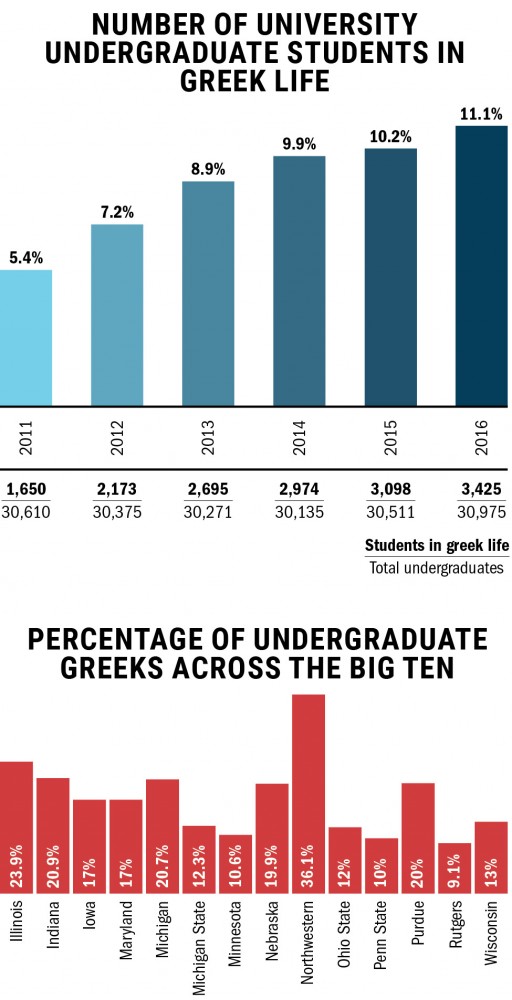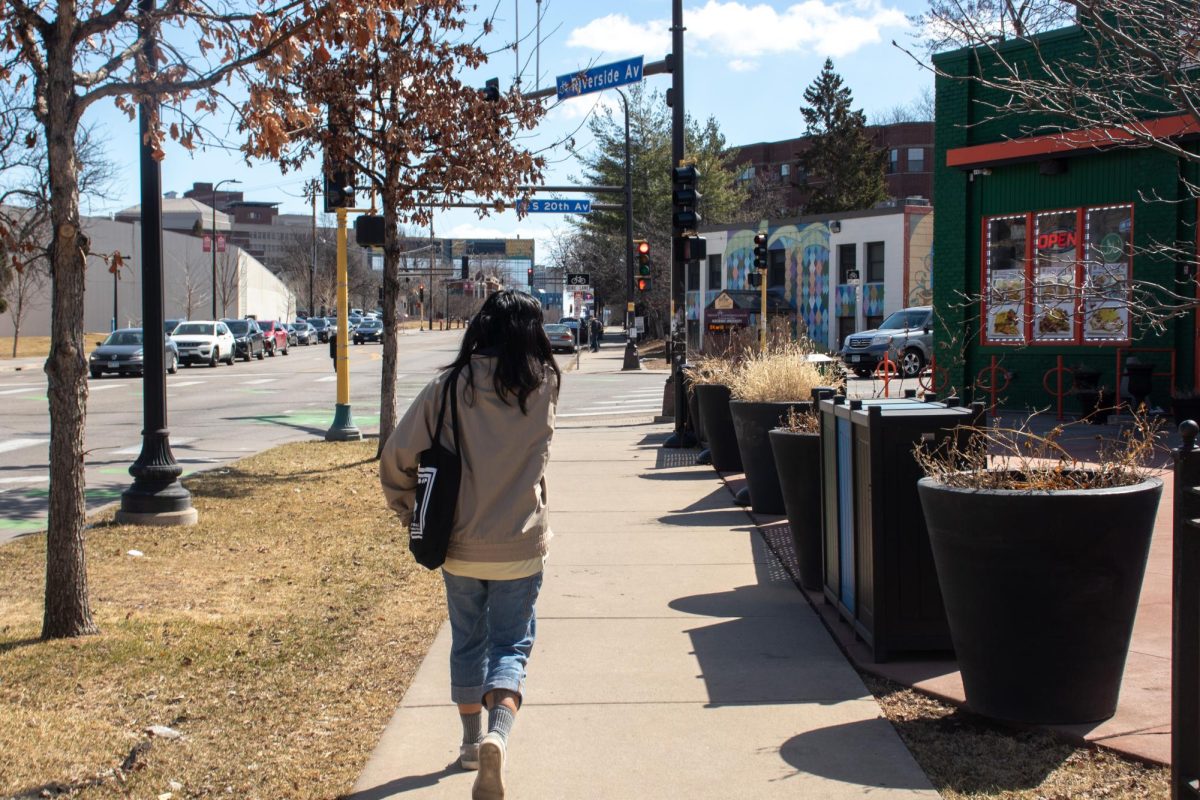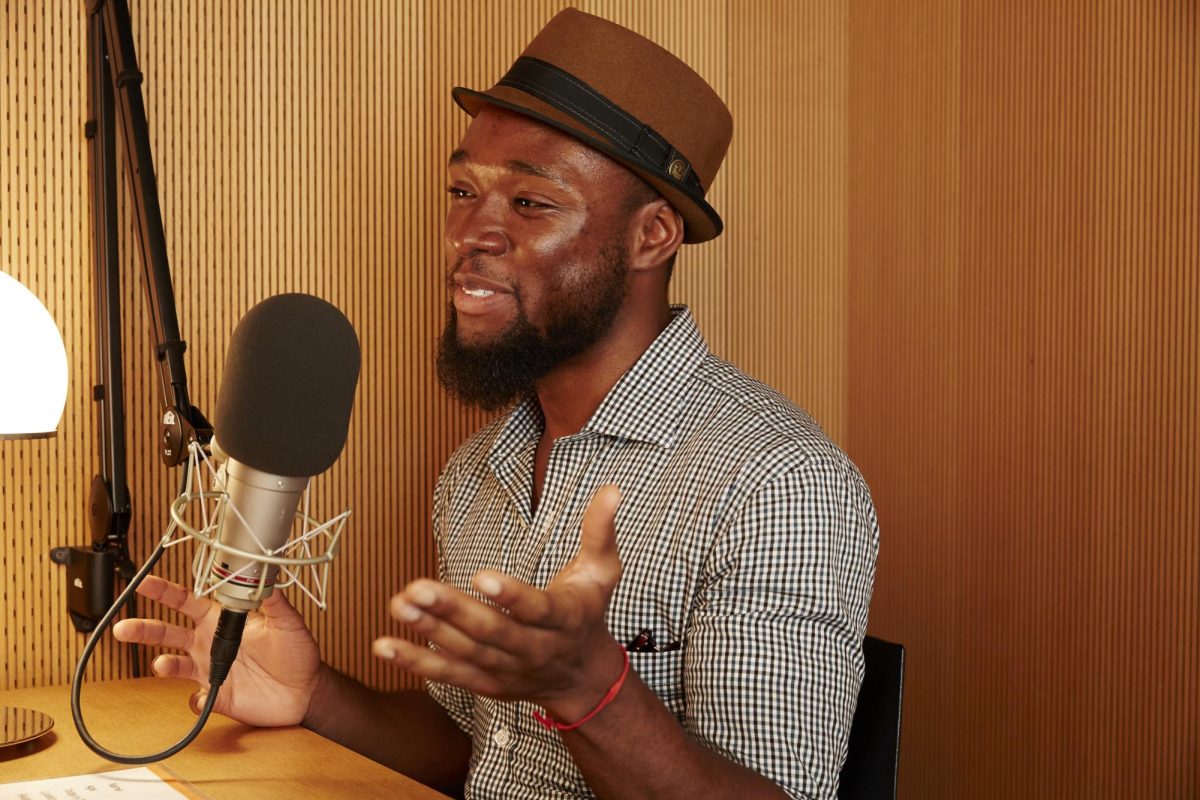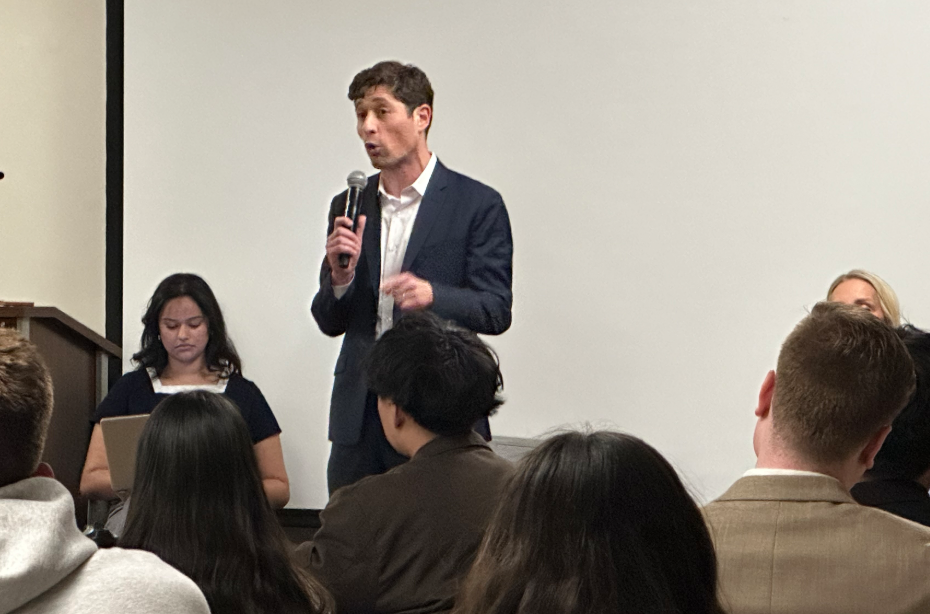 Participation in greek life at the University of Minnesota is the highest it’s been in years.
Participation in greek life at the University of Minnesota is the highest it’s been in years.
Last spring, 10 percent of undergraduates were members of a University fraternity or sorority, up from 6 percent in 2011, according to a report presented to the Board of Regents earlier this month. The increase surpassed a University Greek Community Strategic Task Force’s goal participation rate of 9 percent by 2017.
Still, the rate of greek life participation is lower than the Big Ten average of 13 percent.
Regent Thomas Devine said recruitment garnered 17 percent of first-year students last fall, the highest number since the 1960s.
In a presentation to regents Feb. 9, the Office for Student Affairs attributed this rise to steps recommended by the task force. The task force included regents, administrators and alumni.
Lamar Hylton, assistant vice provost for student life, said the task force looked to boost participation for many reasons, including the fact that fraternities and sororities overall boast higher grades and four-year graduation rates than the rest of the student body.
Average fraternity GPAs are lower than the average GPA of the student body, however.
Devine said minimum GPA requirements and the pressure to graduate with one’s pledging class likely contribute to the high GPAs and graduation rates found in greek life.
Hylton said this jump from the bottom to the middle of the Big Ten is a big accomplishment, even as the University remains below the Big Ten average. He said this is because greek presence at the University is still growing.
James Ehrmann, Program Director of Fraternity and Sorority Life, said the school’s shift from a commuter campus to a residential one may have contributed to the increase, but the task force has played the biggest part.
Ehrmann said the Minnesota Greek Alumni Council and the Greek Alumni Network and Mentor program — both of which were formed by the task force — have been among the most beneficial initiatives.
He said the office is happy with recent growth and now wants to focus on maintaining the health of the chapters rather than increasing participation.
Lynn Swon, president of MGAC, said the council organized the Unity house, a collection of 180 beds in 17th Avenue Residence Hall reserved for first-year students interested in greek life. She said 65 percent of these freshmen later rush greek chapters.
Swon said MGAC also organized health and safety training for sorority and fraternity house directors led by representatives of Boynton, Student Counseling Services, and the Minneapolis Police Department.
Regent Michael Hsu, who worked on the task force, said the progress made in the last five years makes him hopeful. His personal goal is to increase greek life participation rates to 20 percent.
“We’ve seen each other as competitors before and now that we’re working together we can solve problems that are bigger than ourselves,” he said.








